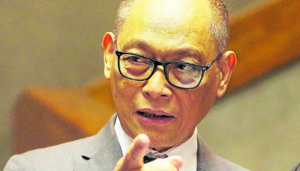Low interest rates and a strong peso are helping ease the burden of a bigger debt pile the government amassed to fight the COVID-19 pandemic, according to the Department of Finance (DOF).
“As long as debt is managed prudently, the risks from debt exposure are minimized and additional resources continue to be obtained for projects that contribute favorably to development,” Finance Undersecretary and chief economist Gil Beltran said in an economic bulletin on Saturday.
The debt-to-gross domestic product ratio, which measures a country’s capability to pay its obligations, climbed to a 14-year high of 54.5 percent in 2020, reversing prepandemic gains that reduced the debt level to a record-low 39.6 percent the previous year.
He said the average interest rate on public debt nonetheless declined to 3.88 percent last year from 4.67 percent in 2019, as the Philippines kept its investment-grade credit ratings even while debt watchers meted out a flurry of downgrades.
The lower interest slapped on borrowings minimized the increase in last year’s payments to only 5 percent as the amount settled rose to P380.4 billion from 2019’s P360.9 billion.
“The national government emerged out of last year’s episode with lower debt service, low interest rates and a stronger peso,” Beltran said.



